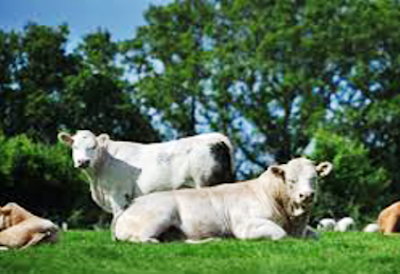 |
| ANIMAL FEED |
Animal feed is the costly item in animals and poultry creation,
representing 60-70% of total costs. To save money on expenses, numerous producers
supplement feed with enzyme added substances, which empower them to deliver
more meat per animal or to produce the same measure of meat less expensive and
quicker.
Found in every living cell, enzymes catalyze chemical
procedures that change over nutrients into energy and new tissue. They do this
by tying to substrates in the feed and separating them into littler mixes.
Enzymes can be arranged by the types of substrates they work on.
Commercially-accessible enzymes can be gotten from plants and
animals (e.g., actinide from kiwi and rennet from calf stomachs) and also
microorganisms (e.g., amylase from Bacillus and lactase from Aspergillum).
Here are three types of enzymes that are commonly considered for
utilization in animal feed:
phytases, carbohydrase, and proteases.
1. Phytases
Phytases separate phytate, a substrate that contains
phosphorus. Phosphorus is a major nutrient that is important for development,
upkeep, and cell and tissue repair. Corn, which is a noteworthy segment of the
commonplace poultry eating routine, contains huge measures of phytate. Adding
phytase to poultry feed permits the animal to absorb a greater amount of the
phosphorus inside of the feed.
There is also an additional advantage to maximize the amount
of phosphorus that an animal can ingest. Once discharged, undigested phosphorus
saturates the ground and eventually advances toward streams, lakes, and the
sea. Given adequate light, nutrients from the overflow treat green growth and
other oceanic plants. This produces large algal blossoms that exhaust the water
of oxygen. Laws that dishearten phosphorus pollution in a few states have added
to the expanded utilization of phytase throughout the years.
2. Carbohydrase
Carbohydrase enhances the absorbability of carbohydrates in
feed, consequently expanding the measure of energy an animal can use to create
muscle and grow. Types of carbohydrase incorporate amylase, which separates
starch into fructose, maltose, glucose, and other straightforward sugars; and xylonite,
which processes complex carbohydrates found in dietary fiber. In spite of the
fact that chickens actually create enzymes that guide in the absorption of carbohydrates,
they don't deliver all the enzymes expected to separate fiber totally.
3. Proteases
Proteases split complex proteins into shorter proteins,
called peptides, and amino acids, which are the building squares of protein.
They have also capacity to take apart proteins that tie starch inside of feed
ingredients, along these lines making a greater amount of the energy found in
starch accessible to the animal.
Suraj Shree Company common
protein animal feed added substance, Versazyme, is an expansive range protease
that debases numerous protein substrates. A 2001 trial demonstrated that
chickens that were encouraged a 2% lower protein eating regimen supplemented
with Versazyme developed as substantial as winged creatures that were bolstered
a standard eating routine containing more protein.
While a huge number of enzymes have been recognized and a few
hundred are accessible commercially, just a small amount of these are created
on a modern scale.
